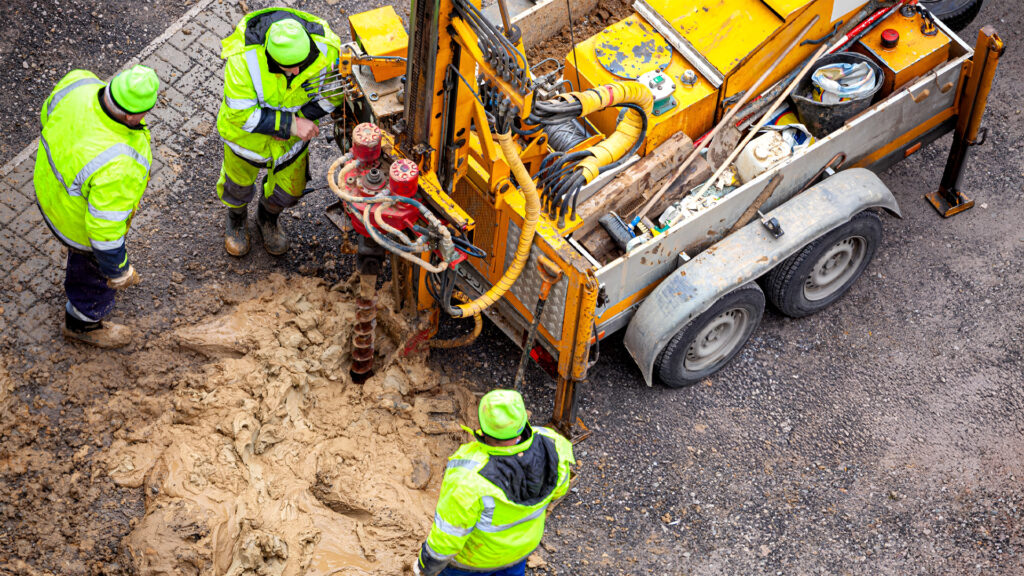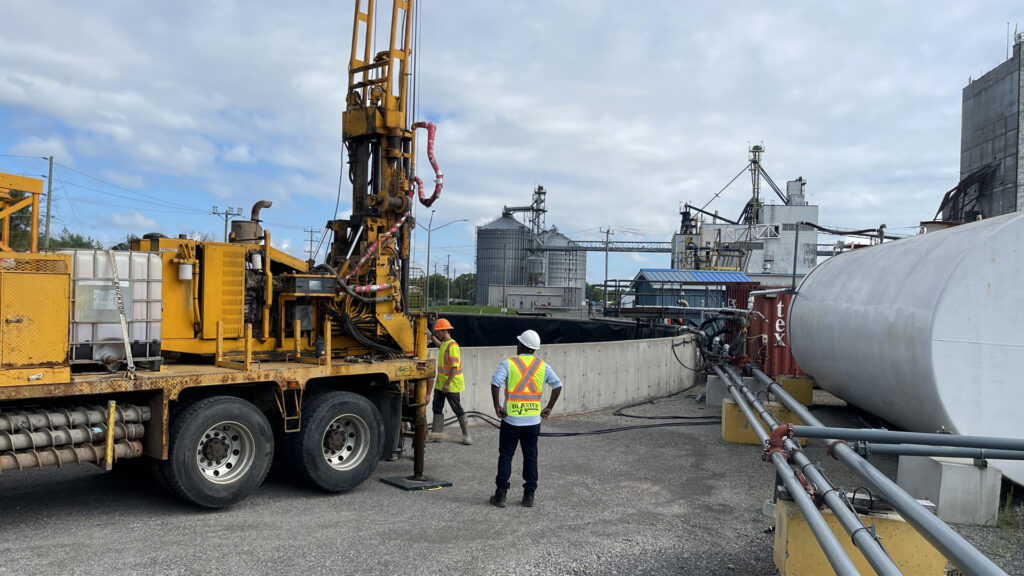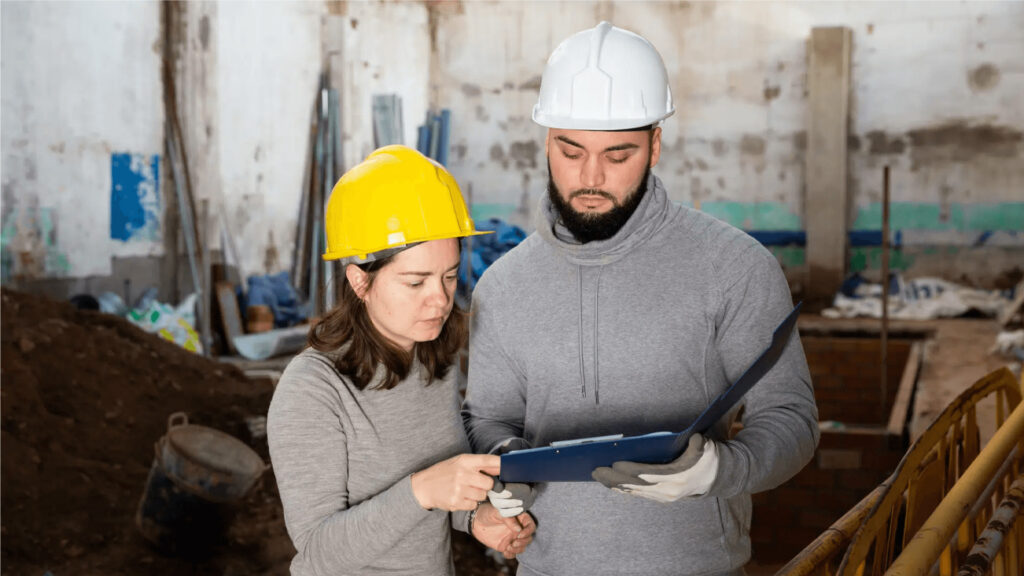Phase One & Phase Two ESA & RSC
Blastek offers comprehensive environmental services as a one-stop-shop provider, managing remediation programs from initial assessment and design to closure and long-term operations and maintenance. We assist our clients in ensuring regulatory compliance and effective risk management throughout the project lifecycle. Our team of experts prioritizes sustainability in all our projects, delivering innovative and effective solutions to environmental challenges.
Environmental Site Assessments
Blastek specializes in Environmental Site Assessments, adhering to the Canadian Standards Association (CSA) and Ontario Regulation (O. Reg.) 153/04 requirements. Our team includes Professional Engineers (P.Eng.) and Professional Geoscientists (P.Geo) with extensive experience in managing ESAs for private, public, and government organizations. As an approved vendor for various financial institutions, we provide consulting services necessary for real estate transactions, and assist clients identify and manage environmental risks.
What is an Environmental Site Assessment?
An ESA is a systematic assessment of site conditions aimed at identifying potential or existing environmental contamination, assessing liabilities, and providing data for remediation or risk assessment.
Phase I Environmental Site Assessments serve different purposes based on the applicable standard. The CSA Z768-01 Standard supports due diligence and financing, while an O. Reg. 153/04 ESA is required for activities such as rezoning, obtaining building permits, filing Records of Site Condition, and other governmental applications in Ontario.
Types of Environmental Site Assessments
Phase I Environmental Site Assessments (CSA Z768-01)
A Phase I ESA is a non-intrusive assessment conducted to evaluate a property’s historical and current uses to identify potential environmental impacts. It is a critical tool for property owners, purchasers, lenders, and municipal representatives to uncover potential liabilities such as contamination, development restrictions, or loss of land value.
With the evolution of Canadian legislation, property owners are held accountable for environmental impairments regardless of the origin of contamination. As such, Phase I ESAs have become essential for informed decision-making, mitigating risks, and fulfilling due diligence requirements for property transactions. They also serve as a disclosure tool to address vendor obligations.
In Ontario, Phase I ESAs are conducted under two primary standards: the CSA Z768-01 Standard. The CSA Z768-01 Standard supports due diligence and financing, while Ontario Regulation 153/04 is required for activities such as rezoning, obtaining building permits, filing Record of Site Condition (RSC), and other governmental applications in Ontario.
A Phase I Environmental Site Assessment is typically required for:
- Real Estate Transactions: To assess environmental risks when purchasing or leasing commercial or industrial properties, often required by lenders and insurers.
- Regulatory Compliance: Mandated by Ontario regulations for permits or licenses, such as zoning changes, hazardous waste permits.
- Property Development: To identify environmental liabilities before construction or redevelopment.
- Lender Requirements: To evaluate environmental risks and protect financial institutions’ investments.
- Corporate Due Diligence: During mergers, acquisitions, or transactions to identify environmental liabilities.
Requirements may vary by jurisdiction, and consultation with environmental professionals or legal experts is recommended.
Purpose and Process
A Phase I ESA identifies actual and potential contamination on a property through historical research, site observations, and interviews. This qualitative assessment highlights potentially contaminating activities (PCAs) and areas of potential environmental concern (APECs), serving as a basis for further intrusive investigations, such as Phase II ESAs, if needed.
Key components in a Phase I ESA:
- Site Visit: Includes visual inspection of the property, buildings, and surrounding areas for environmental concerns such as chemical storage, fuel tanks, or stressed vegetation.
- Research: Historical documents (e.g., aerial photos, fire insurance plans) and records from regulatory bodies are reviewed to understand past and current site usage.
- Report: Findings are summarized in a comprehensive report, providing conclusions and recommendations based on the applicable standards.
Blastek’s experienced professionals ensure Phase I ESAs are thorough, accurate, and aligned with all legislative and industry standards. These assessments help clients effectively manage environmental risks and make informed property decisions.
A Phase I ESA identifies potential environmental concerns related to historical site usage, allowing for informed decision-making in property transactions and development plans.

Phase II Environmental Site Assessment (CSA Z769-00)
Building on a Phase I ESA, a Phase II ESA entails detailed testing and analysis to confirm the presence and extent of contaminants.
A Phase II ESA involves intrusive investigation techniques to confirm contamination identified during Phase I ESA, delineate its extent, and support remediation efforts. This includes borehole advancements and monitoring well installations to sample and test soil and groundwater.
Blastek is committed to providing thorough assessments tailored to each project’s unique needs, ensuring compliance with relevant regulations and standards. Our licensed professionals will prepare and submit Records of Site Condition (RSC) as needed for mandatory filings in other Canadian Provinces, supporting property redevelopment and environmental safety.

Phase One Environmental Site Assessment (O.REG 153/04)
A Phase One Environmental Site Assessment (ESA) is a foundational procedure in Ontario, Canada, governed by Ontario Regulation 153/04. This assessment primarily focuses on identifying potential environmental contamination risks associated with a property based on its historical and current use. The Phase One ESA is crucial in determining whether further investigation—specifically into Phase Two ESA—is necessary. Below is a comprehensive description of the objectives, tasks, requirements, expected results, and the relevance of the Record of Site Condition (RSC) in this context.
Objectives of Phase One ESA
The primary objectives of a Phase One ESA include:
- Identification of Potentially Contaminating Activities (PCAs) and Areas of Potential Environmental Concern (APECs): To detect any potential or existing contamination concerns that could impact human health or the environment based on the site’s historical and present activities.
- Compliance with Regulations: To ensure that property transactions or developments comply with provincial environmental regulations.
- Due Diligence: To provide a level of assurance to potential buyers, investors, and stakeholders regarding the environmental status of the property.
Components of Phase One ESA
The Phase One ESA includes several key components, which are typically structured as follows:
- Historical Research: Reviewing historical records, maps, and documents to understand past land uses, activities, and any past contamination concerns.
- Site Visit: Conducting a physical inspection of the property to identify any visible signs of contamination or environmental concerns, such as the presence of hazardous materials and distressed vegetation.
- Interviews: Engaging with current and past property owners, occupants, and local agencies to gather information regarding the historical uses of the property and any known environmental issues.
- Documentation Review: Analyzing governmental and environmental records for any filed contaminant reports or incidents linked to the site or nearby properties.
- Report Preparation: Compiling the findings into a comprehensive report that outlines identified PCAs and APECs and provides recommendations for further action, if necessary.
Requirements for Phase One ESA
The following requirements must be met to conduct a Phase One ESA under O. Reg. 153/04:
- Qualified Professionals: The assessment must be carried out by individuals with the necessary expertise and qualifications to ensure reliable and consistent results.
- Adherence to Standard Procedures: The assessment must follow established guidelines and methodologies that comply with regulatory standards for environmental assessments.
- Comprehensive Findings: All relevant information must be gathered and documented, ensuring a thorough understanding of the environmental context of the site.
Expected Results of Phase One ESA
The outcomes of a Phase One ESA typically include:
- Documented Findings: A detailed report identifying any PCAs and APECs, historical uses of the property that may contribute to environmental concerns, and potential next steps.
- Decision-Making Support: Providing stakeholders with the information needed to make informed decisions regarding property transactions or developments.
- Identification of Further Assessments: Recommendations for a Phase Two ESA if significant contamination concerns are identified that warrant further investigation.
Phase Two Environmental Site Assessment (O.REG 153/04)
A Phase Two Environmental Site Assessment (ESA) is a critical process in Ontario, Canada, governed by Ontario Regulation 153/04. This assessment is performed after the completion of a Phase One ESA, which identifies potential contamination concerns based on historical and current site usage. The following sections detail the objectives, tasks, requirements, expected results, and the significance of a Record of Site Condition (RSC) within the context of Phase Two ESA.
Phase Two Environmental Site Assessments are a vital process for ensuring that sites are safe for re-use and meet regulatory requirements in Ontario. They play an essential role in groundwater and soil conservation and public health frameworks by providing data necessary for informed decision-making and promoting responsible land management practices.

Objectives of Phase Two ESA
The primary objective of a Phase Two ESA is to determine the presence, absence, and extent of contamination within a property, specifically focusing on Areas of Potential Environmental Concern (APECs) identified during the Phase One ESA. The assessment aims to evaluate the levels of potentially hazardous substances, including soil, groundwater, and soil vapors to ensure health and safety regulations are adhered to.
Key objectives include:
- Confirming Contamination: Identifying any hazardous materials and quantifying their concentrations.
- Evaluating Environmental Quality: Assessing the impact of contaminants on the local environment and public health.
- Supporting Development Applications: Providing essential data needed for securing development approvals, particularly when a change of land use is pursued.
Components of a Phase Two ESA
The components of a Phase Two ESA generally involve the following steps:
- Site Investigation Planning: Developing a comprehensive plan to guide fieldwork based on previous findings from Phase One ESA.
- Soil and Water Sampling: Collecting samples from various depths and locations within the site, as well as from groundwater monitoring wells, for laboratory analysis.
- Laboratory Analysis: Testing samples for specific contaminants, including heavy metals, petroleum hydrocarbons, and volatile organic compounds.
- Data Interpretation: Analyzing lab results to assess the extent and severity of contamination and to determine if it poses a risk to human health or the environment.
- Reporting: Preparing a detailed report summarizing findings, assessment methodologies, and recommendations.
Requirements of Phase Two ESA
Phase Two ESA requirements, as stipulated by O. Reg. 153/04, include:
- Conducting assessments by qualified professionals with appropriate training and certifications.
- Adhering to standard methodologies for sampling and laboratory analysis to ensure accuracy and reliability of data.
- Submitting clear, comprehensive documentation that can stand scrutiny and meet regulatory expectations.
Expected Results of Phase Two ESA
The expected results from a Phase Two ESA typically include:
- Contamination Assessment Report: A detailed account of the presence, concentration, and distribution of contaminants at the site.
- Risk Identification and Characterization: Identifying whether the levels of contaminants pose any significant risk to human health or the environment.
- Remediation Recommendations: Suggestions for potential remediation strategies if contamination is confirmed.

Importance of Record of Site Condition (RSC)
The Record of Site Condition (RSC) is a critical aspect of Phase Two ESA because it is required for certain transactions involving land use, particularly when applying for development permits or when a property is being sold or transferred.
The RSC serves several key purposes:
- Legal Assurance: It provides a legal document that indicates a site has been assessed and meets environmental standards set by regulatory authorities.
- Facilitating Transactions and Development: The RSC helps in safeguarding buyers and financing institutions by reassuring them that the property is not risky regarding contamination liabilities. An RSC is often a prerequisite for development approvals, particularly in previously contaminated regions, ensuring projects align with environmental regulations.
- Stakeholder Confidence: It helps in fostering trust among potential buyers, investors, and local residents about the safety and environmental compliance of the site.
- Documenting Compliance: It serves as evidence for adherence to regulatory requirements, ensuring that the site has been assessed and managed appropriately.

Can RSC Be Submitted After Phase One ESA?
An RSC can only be submitted following the completion of further assessments, including Phase Two ESA, if the Phase One ESA identifies PCAs and APECs that require investigation. The RSC is a product of a comprehensive assessment process and cannot be finalized solely based on Phase One ESA findings. Thus, if a Phase Two ESA is warranted, it must be completed, and its results must be incorporated into the RSC before submission to the Ministry of the Environment, Conservation and Parks for approval.
The Phase One Environmental Site Assessment is a critical first step in evaluating a property’s environmental condition. It lays the groundwork for understanding contamination risks and assists in regulatory compliance while the RSC serves as essential documentation for any future property use or transactions.

